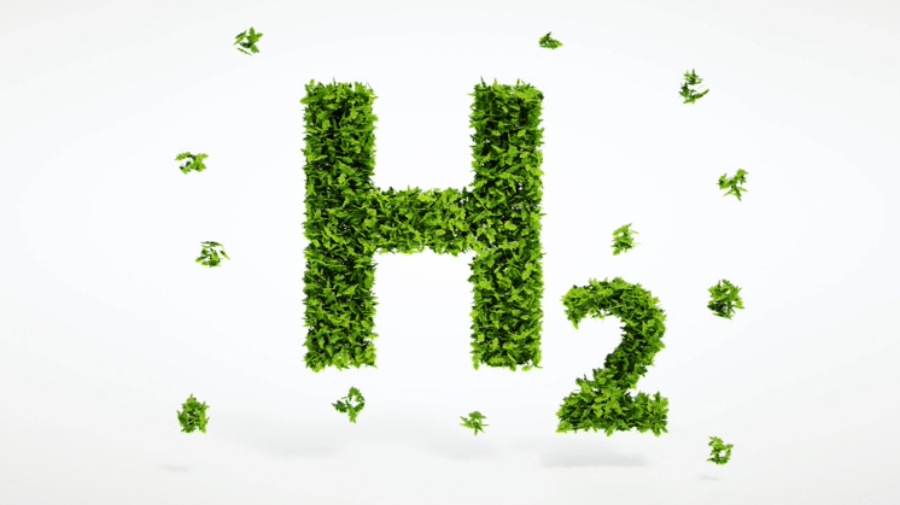Proficient catalyst for green Hydrogen
Green hydrogen is an immense source of energy produced by splitting water into hydrogen and oxygen, and it is one of the most prevalent alternatives to renewable energy storage. Hydrogen-based fuels have the ability to transport renewable energy over vast distances, hundreds of kilometers, from regions with abundant energy to places with a scarcity of energy.
New water and material separation technology that increases the production of green hydrogen was developed by scientists. As opposed to the conventional, carbon-emitting hydrogen generation from natural gas, this enables industrial partners to relocate for greening hydrogen across the conservation of sustainable energy. To alleviate the environmental issue, more energy must be consumed from renewable sources, such as solar and wind. However, scale energy storage is difficult due to these sources’ irregular availability.
Water electrolysis technology for Green H2
Electrochemical water splitting has emerged as one of the most intriguing avenues for producing green hydrogen, that can help to achieve carbon neutrality. While significant efforts have been made in the laboratory to understand fundamental catalysis and produce high-performance electrocatalysts for the two half-reactions involved in water electrocatalysis, far less emphasis has been dedicated to larger-scale research. Few such studies, for example, have been conducted on a large scale. Energy is transferred through freshwater when reaction-enhancing molecules called catalysts are present to produce hydrogen and oxygen.
There are several different factors to take into account while designing electrocatalysts for basic research: 1) The catalyst should be extremely effective, have a high current density, and low overpotential;
2) Durable with no observable performance loss over an extended time frame of evaluation time;
3) The catalysts used for water electrolysis must be based on earth-abundant elements;
4) The key challenges for launching PEM water electrolysis are to reduce the consumption of noble metals, improve the electrochemical performance of catalysts, and produce non-precious metal catalysts.
5) The catalysts employed should be recyclable
Carbon-free H2 production
In light of the reality that green hydrogen emits no carbon emissions, it is a more sustainable option compared to gas from natural sources and coal-based that are momentarily utilized for storing extra electric power at the grid level. Their research centers around electrolysis, which is the process of separating water into hydrogen and oxygen under the power of electricity.
Impression of Manufacturing Cost
Only 4% of the hydrogen produced today is created by water electrolysis, despite the fact that the process has a long history of development spanning many decades, and the majority of it still originates from reforming fossil fuels. In addition, the price of hydrogen per kg depends on whether it is produced by reforming fossil fuels or by using renewable energy to electrolyze water. Prices for green-water electrolyzed hydrogen cannot remain competitive in the commercial markets due to their high cost. Here, we want to draw attention to the fact that, in addition to the expense associated with setting up electrocatalysis, the cost of manufacturing it also plays a significant role in determining whether or not to begin hydrogen production.
Less Exorbitant, New Robust Catalysts Materials
To make green hydrogen more robust and inexpensive, the research team at Georgia Tech plans to deploy mixtures of substances for the electro-catalyst. To produce hydrogen on a wide scale using electrolysis, expensive noble metal catalysts including platinum and iridium are currently employed in the process. These materials are expensive and in short supply, which has caused the shift to hydrogen-based power to stagnate. In fact, fewer than 1% of the annual hydrogen output in 2020 was green hydrogen, according to market research company Wood Mackenzie, primarily because of this expense.
Artificial intelligence in hydrogen technology
The world is currently concentrating on and working to expand the market for hydrogen technology, and it has plans to build suitable energy management systems to meet the need for green energy and environmentally friendly practices. It is essential to have a complete grasp of how hybrid renewable energy systems can be maximized while achieving commercial and societal goals in order to enable the successful implementation of hydrogen-powered renewable energy systems. Common AI faces challenges like genetics.
Demand for green H2
Today, providing hydrogen to industrial users is a significant global industry. The global demand for hydrogen, which has increased more than triple since 1975, is still on the rise. To produce hydrogen, 6% of the world’s natural gas and 2% of its coal are used.
As a result, the production of hydrogen results in annual CO2 emissions of about 830 million tonnes, which is equal to the combined emissions of the United Kingdom and Indonesia.
Future of green-H2
This important research was created by the International Energy Agency to assess the hydrogen market’s current situation and provide recommendations for its future growth.
According to the document, clean hydrogen is currently experiencing unheard-of political and commercial impetus, with a significant increase in global regulations and initiatives. It comes to the conclusion that in order to make hydrogen more commonly used, it is crucial to scale up technology and reduce costs. It will be feasible to fully capitalize on this growing momentum thanks to the practical and doable recommendations made to governments and businesses.
Source

